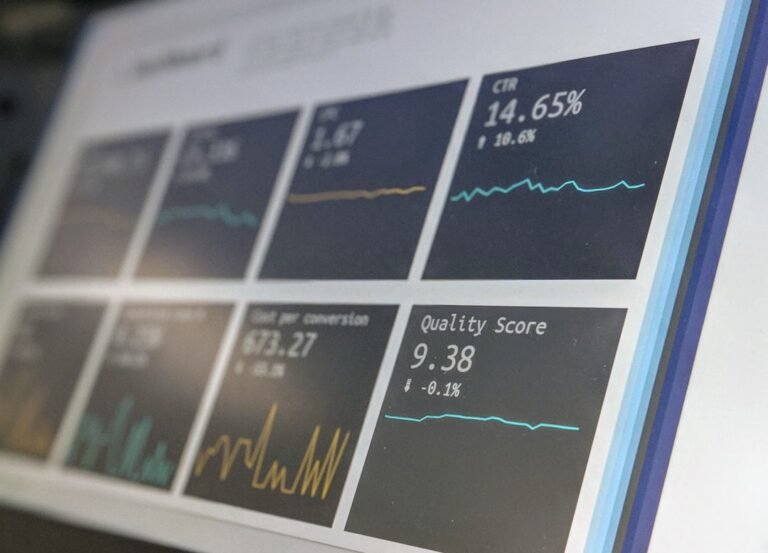The Ultimate SEO Technical Audit Guide for Improved Website Performance
In the ever-evolving landscape of digital marketing, the significance of a robust online presence cannot be overstated. As you navigate the intricacies of search engine optimisation (SEO), one critical aspect that demands your attention is the technical audit of your website. A technical SEO audit serves as a comprehensive evaluation of your site’s infrastructure, ensuring that it is not only accessible to search engines but also user-friendly.
By conducting this audit, you can identify potential barriers that may hinder your site’s performance and visibility in search engine results. As you embark on this journey, it’s essential to recognise that a technical SEO audit is not merely a one-time task but an ongoing process. The digital realm is dynamic, with algorithms and user behaviours constantly shifting.
Therefore, understanding the nuances of your website’s technical health will empower you to make informed decisions that enhance your site’s overall performance. In Ireland, where the digital landscape is rapidly expanding, ensuring that your website adheres to best practices in technical SEO can set you apart from the competition.
Summary
- A technical SEO audit is essential for identifying and fixing issues that may be hindering a website’s performance in search engine results.
- Technical SEO plays a crucial role in improving website visibility, user experience, and overall performance.
- Key elements of a technical SEO audit include assessing website crawlability, indexability, site speed, mobile-friendliness, and security.
- Conducting a comprehensive website crawl helps to identify issues such as broken links, duplicate content, and server errors that may impact SEO performance.
- Analysing website performance and speed is crucial for identifying areas for improvement and ensuring a positive user experience, which can impact search engine rankings.
Understanding the Importance of Technical SEO
The importance of technical SEO cannot be underestimated, especially in a market as competitive as Ireland’s. When you prioritise technical SEO, you are essentially laying the groundwork for all other SEO efforts. A well-optimised website not only improves your chances of ranking higher in search engine results but also enhances user experience, which is crucial for retaining visitors.
In a world where attention spans are fleeting, ensuring that your site loads quickly and functions seamlessly can make all the difference in keeping potential customers engaged. Moreover, technical SEO plays a pivotal role in how search engines crawl and index your website. If your site has structural issues or is difficult to navigate, search engines may struggle to understand its content, leading to lower rankings.
By investing time and resources into technical SEO, you are not just improving your site’s visibility; you are also fostering trust with your audience. A well-structured and easily navigable website signals professionalism and reliability, qualities that resonate with users in Ireland who are increasingly discerning about their online experiences.
Key Elements of Technical SEO Audit

When conducting a technical SEO audit, there are several key elements that you should focus on to ensure a thorough evaluation of your website. First and foremost, you need to assess your site’s crawlability. This involves checking whether search engine bots can access all the important pages on your site without encountering any obstacles.
You can use tools like Google Search Console to identify any crawl errors and rectify them promptly. Another critical element is the analysis of your website’s mobile-friendliness. With an increasing number of users accessing websites via mobile devices, ensuring that your site is optimised for mobile viewing is paramount.
This includes checking for responsive design, fast loading times on mobile networks, and easy navigation on smaller screens. In Ireland, where mobile usage continues to rise, neglecting this aspect could result in losing a significant portion of your audience.
Conducting a Comprehensive Website Crawl
| Metrics | Results |
|---|---|
| Total Pages Crawled | 1500 |
| Response Time | 2.5 seconds |
| Broken Links | 25 |
| Redirects | 10 |
| Images Crawled | 500 |
To gain insights into your website’s technical health, conducting a comprehensive website crawl is essential. This process involves using specialised tools to scan your site and identify various elements that may require attention. During this crawl, you should pay close attention to factors such as broken links, duplicate content, and missing meta tags.
Each of these issues can negatively impact your site’s performance and user experience. As you analyse the results of the crawl, it’s important to categorise the issues based on their severity. Some problems may require immediate action, while others can be addressed over time.
For instance, fixing broken links should be a priority, as they can lead to frustration for users and signal to search engines that your site is not well-maintained. By systematically addressing these issues, you can enhance both the user experience and your site’s overall SEO performance.
Analysing Website Performance and Speed
Website performance and speed are critical components of a successful online presence. In today’s fast-paced digital environment, users expect websites to load quickly; otherwise, they may abandon your site in favour of a competitor’s. To analyse your website’s performance, consider using tools like Google PageSpeed Insights or GTmetrix.
These tools provide valuable insights into loading times and offer recommendations for improvement. When evaluating speed, it’s essential to consider various factors that can affect performance. This includes optimising images, minimising HTTP requests, and leveraging browser caching.
In Ireland, where internet speeds can vary significantly across regions, ensuring that your website performs optimally for all users is crucial. By prioritising speed optimisation, you not only improve user satisfaction but also enhance your chances of ranking higher in search engine results.
Identifying and Fixing Technical Issues

Once you have conducted a thorough analysis of your website’s performance and identified any technical issues, the next step is to address these problems effectively. Common technical issues include broken links, 404 errors, and improper redirects. Each of these issues can create barriers for both users and search engines, ultimately hindering your site’s performance.
To fix these issues, start by creating a detailed action plan that outlines the steps needed to resolve each problem. For instance, if you encounter broken links, consider replacing them with updated URLs or removing them altogether if they are no longer relevant. Additionally, ensure that any redirects are implemented correctly to avoid creating further complications.
By systematically addressing these technical issues, you can significantly improve your website’s overall health and user experience.
Optimising Website Structure and Navigation
A well-structured website is essential for both user experience and SEO performance. When optimising your website structure, focus on creating a logical hierarchy that allows users to navigate easily between pages. This includes using clear categories and subcategories for content organisation and ensuring that important pages are easily accessible from the homepage.
In addition to structure, navigation plays a crucial role in how users interact with your site. Consider implementing breadcrumb navigation to help users understand their location within the site hierarchy. This not only enhances user experience but also provides search engines with valuable context about your content.
In Ireland’s competitive digital landscape, a well-structured and easily navigable website can set you apart from competitors who may overlook these essential elements.
Monitoring and Maintaining SEO Performance
The final step in ensuring long-term success with your technical SEO efforts is monitoring and maintaining your website’s performance over time. Regularly reviewing key metrics such as organic traffic, bounce rates, and conversion rates will help you gauge the effectiveness of your optimisation strategies. Tools like Google Analytics can provide valuable insights into user behaviour and engagement on your site.
In addition to monitoring performance metrics, it’s essential to stay informed about changes in search engine algorithms and industry best practices. The digital landscape is constantly evolving, and what works today may not be effective tomorrow. By staying proactive and adapting your strategies accordingly, you can ensure that your website remains competitive in Ireland’s dynamic online environment.
Regular audits and updates will not only help maintain your site’s technical health but also foster trust with users who expect a seamless online experience. In conclusion, conducting a thorough technical SEO audit is an indispensable part of maintaining a successful online presence in Ireland’s competitive digital landscape. By understanding the importance of technical SEO and focusing on key elements such as website structure, performance analysis, and ongoing monitoring, you can significantly enhance both user experience and search engine visibility.
Embracing these practices will empower you to navigate the complexities of digital marketing with confidence and achieve lasting success in the ever-evolving online world.
FAQs
What is an SEO technical audit?
An SEO technical audit is a comprehensive review of a website’s technical infrastructure to identify any issues that may be impacting its search engine visibility and performance.
Why is an SEO technical audit important?
An SEO technical audit is important because it helps to uncover any technical issues that may be hindering a website’s ability to rank well in search engine results. By addressing these issues, the website can improve its visibility and ultimately attract more organic traffic.
What are some common issues identified in an SEO technical audit?
Common issues identified in an SEO technical audit include broken links, slow page load times, improper use of meta tags, duplicate content, mobile-friendliness issues, and crawl errors.
How is an SEO technical audit conducted?
An SEO technical audit is typically conducted using a combination of manual checks and automated tools. The auditor will review various aspects of the website’s technical setup, such as its site structure, URL structure, internal linking, and server configuration.
What are the benefits of conducting an SEO technical audit?
The benefits of conducting an SEO technical audit include improved search engine visibility, better user experience, increased organic traffic, and a stronger foundation for ongoing SEO efforts. It also helps to identify and fix any technical issues before they negatively impact the website’s performance.








